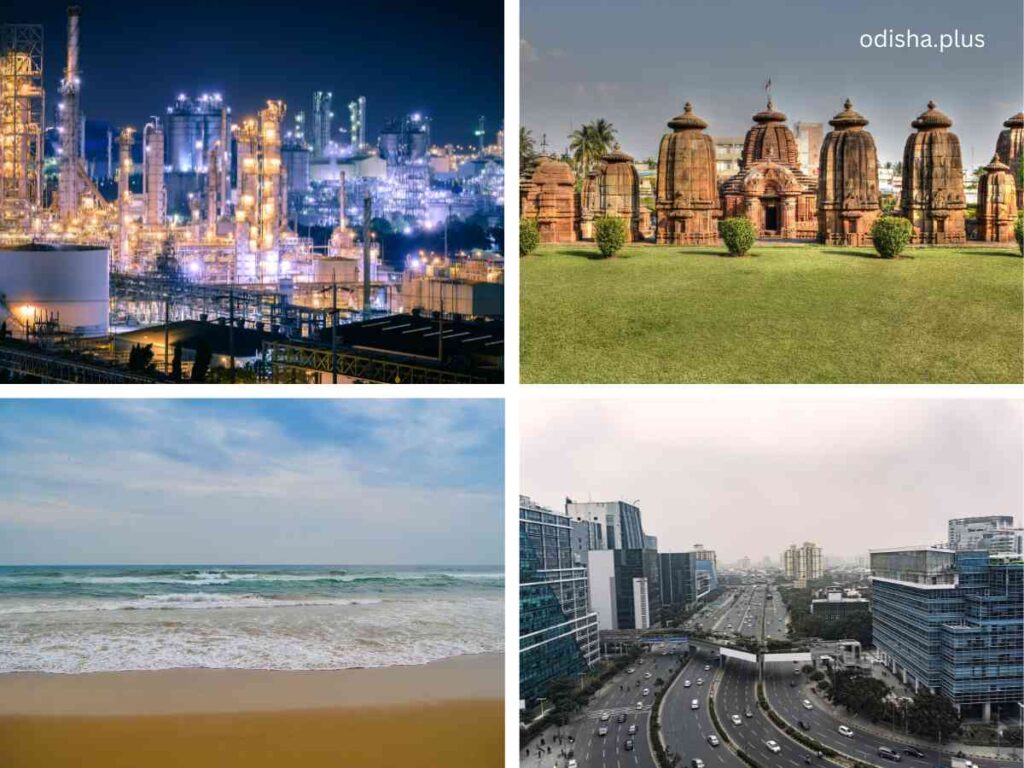Odisha’s 25-year development plan focuses on infrastructure, industry, and inclusive growth for a sustainable economic future
Bhaskar Parichha

Odisha, a state rich in natural resources, strategically located, and steeped in cultural heritage, has a crucial 25-year opportunity to evolve into a thriving and sustainable area. Analyzing its current path, economic patterns, and developmental hurdles reveals what Odisha must focus on in the coming decades to foster inclusive growth and position itself as a significant contributor to India’s future.
To realize its economic potential, Odisha must invest heavily in infrastructure. This involves enhancing and modernizing road, rail, and air transport systems. Initiatives like the Greater Bhubaneswar project, which aims to outgrow cities such as Bengaluru, demonstrate ambition, but successful implementation is essential. Finalizing the Puri International Airport and increasing port capacities, such as Paradip’s target of 500 million tonnes by 2047, will enhance trade and tourism.
Utilizing its renewable energy resources, such as solar and wind, along with coal, Odisha aims to provide a reliable power supply around the clock. This initiative builds on previous commitments, including the ₹54,000 crore power sector plan established in 2014.
Historically, Odisha’s economy has depended on mining and heavy industries, but it is crucial to diversify. The Odisha Industrial Development Plan 2025 focuses on sectors like food processing, chemicals, textiles, and electronics. Expanding these sectors over the next 25 years could generate millions of jobs and lessen reliance on mineral resources like iron ore and bauxite.
Given that agriculture employs a significant portion of the workforce, Odisha must adopt technology-driven farming practices, diversify crops, and enhance irrigation systems, such as through the Nabakrushna Choudhury Seccha Unnayan Yojana, to improve productivity and strengthen resilience against climate-related challenges.
While Bhubaneswar is already recognized as a smart city, Odisha should also focus on transforming Tier-II cities like Cuttack, Rourkela, and Sambalpur into economic centers with effective urban planning to accommodate population growth and migration.
IT hubs in Bhubaneswar, which already host companies like Infosys and TCS, should grow alongside the tourism sector, taking advantage of Odisha’s coastline, temples, and rich biodiversity.
A skilled and healthy workforce is essential for sustainable growth. Enhancing literacy rates (currently at 73.5%) and developing top-tier institutions beyond Bhubaneswar’s World Skill Center will equip young people for new industries. Emphasizing STEM and vocational training is crucial.
Improving maternal and infant health (with a maternal mortality rate of 222 per 100,000 live births from 2011-2013) and increasing healthcare access in tribal regions will boost Odisha’s Human Development Index (0.606 in 2018). With plans for a youth budget, Odisha needs to create job opportunities to reduce migration and leverage its young population.
Given Odisha’s susceptibility to natural disasters and environmental issues, a sustainable approach is necessary. Enhancing disaster preparedness (such as cyclone shelters and flood management) and supporting eco-friendly industries will safeguard lives and livelihoods.
Expanding the renewable energy capacity beyond 670.48 MW by 2024 is essential for India to achieve its clean energy objectives and is in line with global developments. With 22.1% of the population belonging to Scheduled Tribes, it is vital to involve these communities through sustainable job opportunities, such as forest-based businesses.
Strong governance and increased investment will be key to making progress. Addressing unfinished projects and tackling corruption issues, which have been a long-standing concern, will help build public trust. The state’s financial stability, which was rated highly in 2025, needs to be preserved even as debt levels rise. With $171.96 million in foreign direct investment from 2019 to 2024, Odisha aims to attract ₹5 lakh crore in investments by 2030, supported by initiatives like Utkarsh Odisha 2025, requiring determined efforts.
Supporting micro, small, and medium enterprises, which provide numerous jobs through incentives and improved infrastructure, as outlined in the MSME Development Policy 2022, will promote growth at the grassroots level.
Maintaining Odisha’s unique identity while promoting social progress is essential. By focusing on ecotourism and cultural initiatives, such as Odissi dance and Jagannath heritage, Odisha can attract global visitors, building on the 14 million domestic tourists it receives each year. Programs like Subhadra Yojana should expand to empower women, addressing the current sex ratio of 978 females for every 1000 males and increasing women’s participation in the workforce. To tackle regional inequalities, particularly in the KBK (Koraput-Balangir-Kalahandi) area, specific development initiatives are necessary.
Odisha aims to grow into a $1.5 trillion economy by 2047, up from a projected $111 billion GSDP in 2024-25, and achieving this goal depends on these key areas. The next 25 years should prioritize transforming Odisha into a major driver of India’s economic growth while ensuring a balance between industrial development and the well-being of its people and environment.
Achieving success will depend on the consistent implementation of policies, collaboration with the private sector, and leveraging its strategic location in the East for international trade. If these elements are managed well, Odisha could evolve from being known as ‘India’s best-kept secret’ to becoming a model for sustainable development. This transformation would not only enhance its economic standing but also set a standard for other regions to follow in their pursuit of growth.
(The author is a senior journalist and columnist. Views expressed are personal.)























